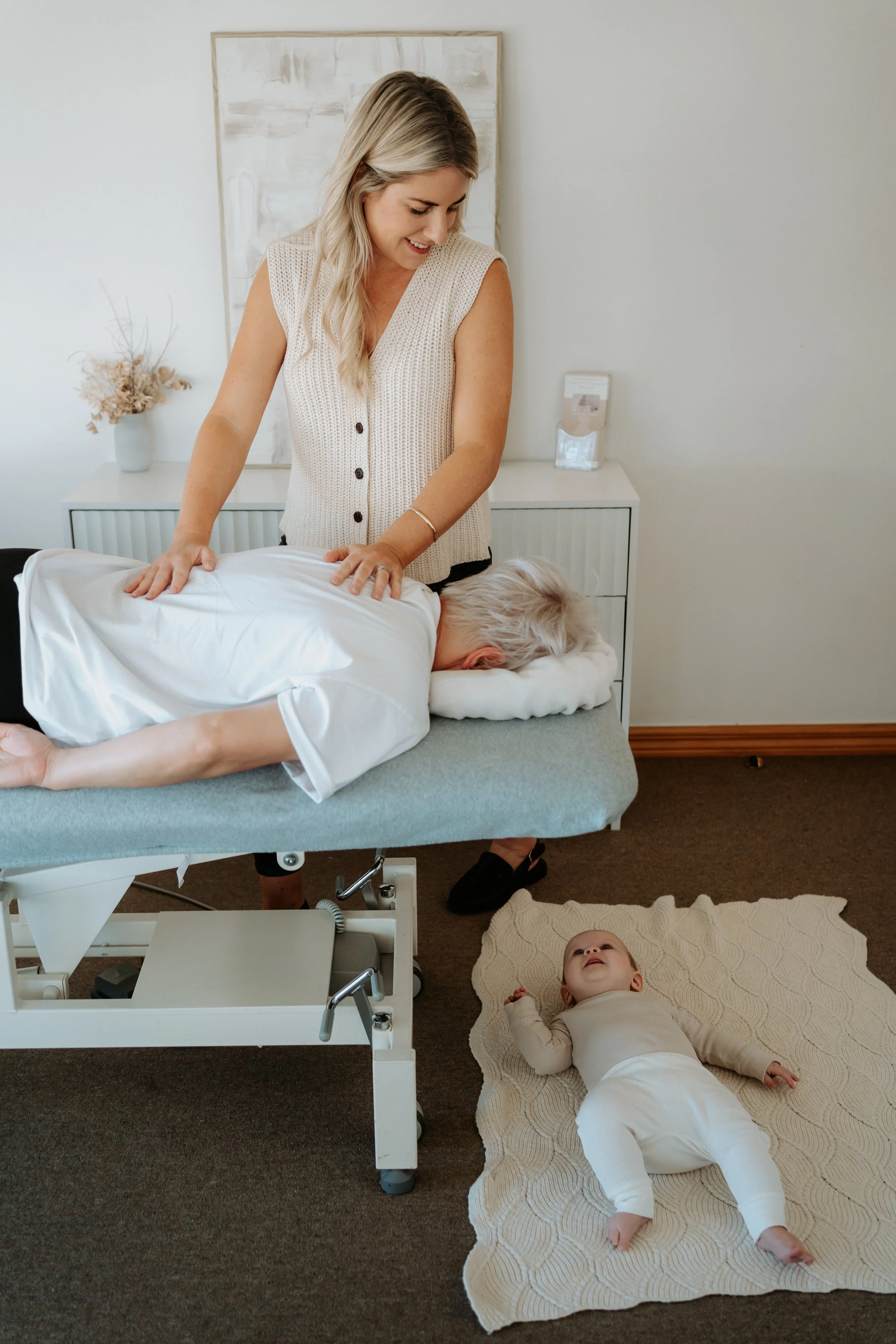Postpartum Back Pain: Why It Happens and How Osteopathy Can Help
Welcoming a new baby into the world is an incredible experience — but it can take a serious toll on your body. One of the most common issues new mums face in the postpartum period is back pain. Whether it started during pregnancy or showed up after birth, back pain can make everything from feeding your baby to simply getting out of bed feel much harder than it needs to be.
As a mum of two and an osteopath with years of experience in postpartum care, I’m here to tell you: back pain after birth is common, but it’s not something you just have to put up with.
Why Do Mums Get Back Pain Postpartum?
There are many reasons back pain can linger or appear after giving birth:
- Hormonal changes – Your body is still under the influence of relaxin, a hormone that loosens joints and ligaments to prepare for birth. This can cause instability in the spine and pelvis postpartum.
- Labour and delivery – Whether you had a vaginal delivery or C-section, labour puts stress on the lower back and pelvis. Even the birthing positions you used may have contributed to strain.
- Breastfeeding and bottle feeding posture – Hunching forward while feeding, especially multiple times a day and night, puts extra pressure on your upper and lower back.
- Lifting and carrying your baby – From lifting capsules and prams to constant baby-holding, your back takes on repetitive strain — often with compromised posture.
- Lack of core strength – The abdominal muscles take time to heal, especially if you experienced diastasis recti (abdominal separation). A weak core means your back works harder to support you.
Simple Ways to Relieve Postpartum Back Pain at Home
- Be mindful of your posture – When feeding, bring baby to your chest rather than leaning forward. Use pillows to support your arms and lower back.
- Gentle movement – Walking, pelvic tilts, and postnatal-safe stretching can help release tension and improve blood flow.
- Heat therapy – A warm heat pack across your lower back or shoulders can soothe tight muscles and reduce discomfort.
- Supportive footwear – Wear cushioned, supportive shoes at home (avoid going barefoot for long periods on hard floors).
- Avoid overloading one side – Try not to always carry your baby on the same hip. Switch sides regularly to avoid imbalances.
How Osteopathic Treatment Can Help
As a qualified osteopath with a focus on women’s health, I offer gentle, hands-on treatment designed specifically for postpartum recovery. Osteopathy can help by:
- Releasing tight muscles in the back, hips, and shoulders
- Improving mobility in the spine and pelvis
- Supporting postural alignment and muscle balance
- Aiding recovery from C-section or vaginal birth
- Giving you tailored advice for safe movement and healing
My approach is always compassionate, calm, and practical — meeting you where you're at in your recovery. Whether you’re six weeks post-birth or several months in, it's never too late to start feeling better.
Your Appointment is Baby-Friendly
I know it can feel daunting trying to schedule something for yourself with a baby in tow — that’s why my clinic is set up to make it as easy and stress-free as possible. You’re welcome to bring your baby, other children, or a support partner to your appointment. We can pause for feeds, nappy changes, or whatever your little one needs. No pressure. No judgement. Just care, tailored to you.
Book Now and Support Your Recovery
Postpartum is a big adjustment, and you deserve support in feeling strong and comfortable again. Let’s work together to ease your back pain and help you enjoy motherhood with more freedom and less discomfort.
Book your postpartum osteopathic appointment online today – I look forward to welcoming you and your baby.

